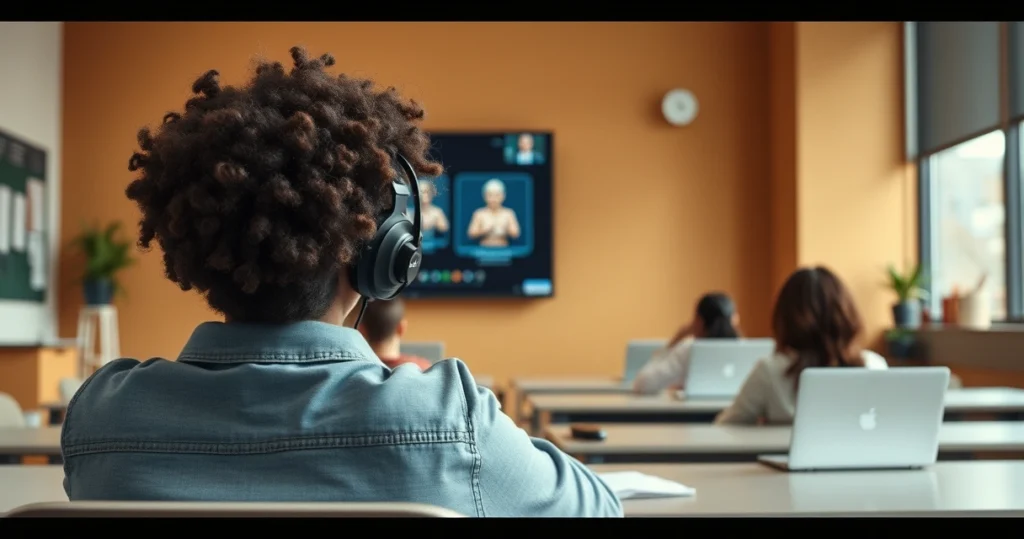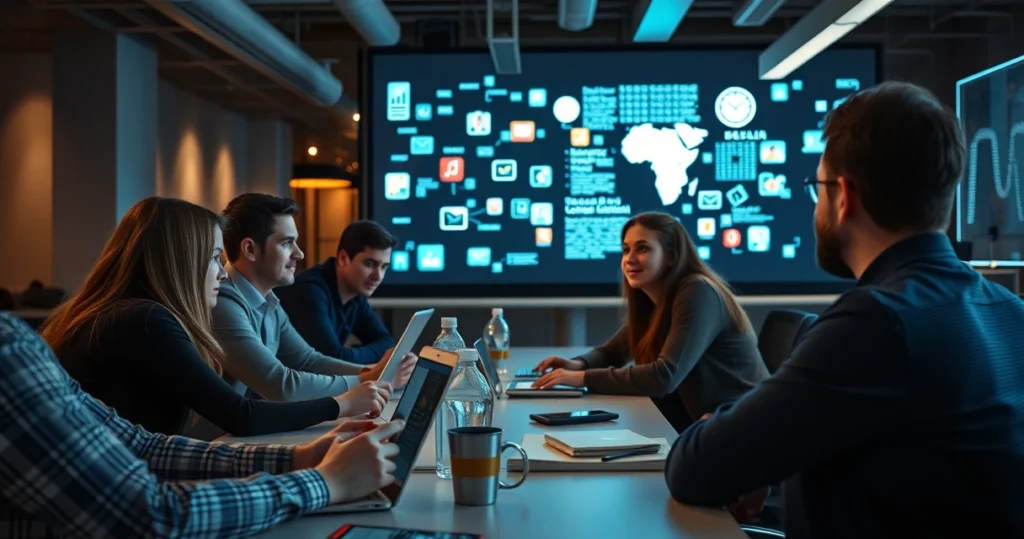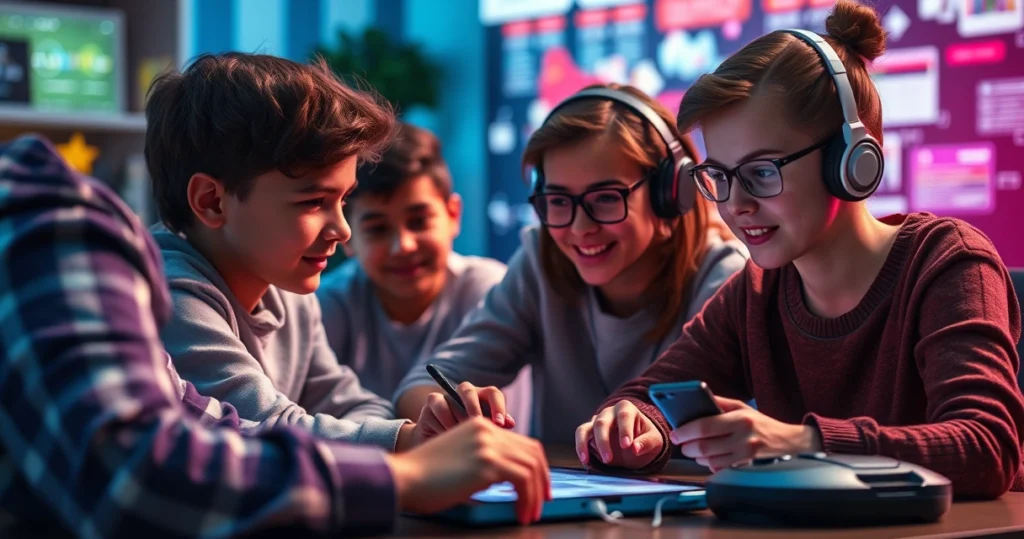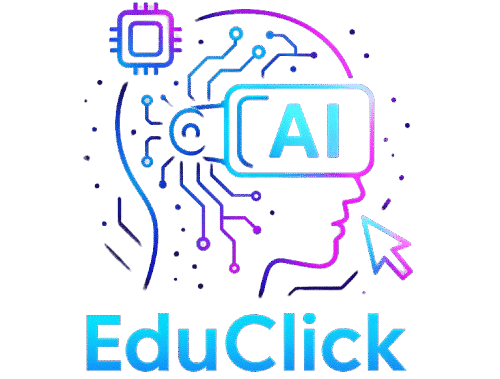Virtual Classrooms and Beyond: The Future of Digital Learning
Imagine a world where learning knows no bounds, where you can acquire knowledge from the comfort of your living room or while sipping coffee at your favorite café. This is the reality that virtual classrooms promise—a revolutionary shift in how we approach education. If you’ve ever experienced the clamor of traditional classrooms or felt the constraints of rigid educational structures, you might find yourself yearning for more flexibility, more innovation, and perhaps, a more personalized learning journey. Virtual classrooms open that door.
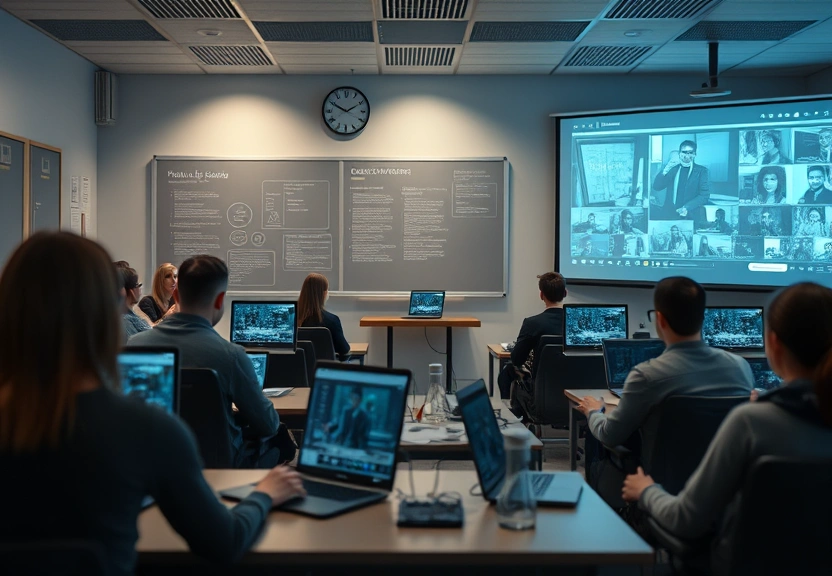
Think back to a time when you sat in a classroom, with a chalkboard filled with scribbles and the faint smell of books lingering in the air. Perhaps you remember feeling a sense of excitement mixed with daunting uncertainty as you embarked on a new educational journey. Yet, despite the nostalgic charm of traditional classrooms, you might have wished for a learning process that adapted to your pace and style. Now, more than ever, digital learning platforms are making this possible, offering a customized experience that resonates with the diverse needs of learners worldwide.
In today’s fast-paced world, the demand for innovative teaching methods has skyrocketed. You are no longer bound by geographical constraints or rigid schedules. Virtual classrooms empower you to engage with interactive content, participate in discussions, and even collaborate with peers across the globe. It’s not just about convenience; it’s about creating a dynamic learning environment that transcends the limitations of time and space. With digital learning, you are at the helm, steering your educational voyage with newfound autonomy and excitement.
As we delve deeper into the realm of digital learning, think about your personal experiences and aspirations. How can virtual classrooms transform the way you acquire knowledge? How will they influence the future of education as we know it? Join me as we explore these questions and uncover the vast potential that lies within the future of digital learning.
The Evolution of Virtual Classrooms
Historical Context and Development
The concept of virtual classrooms is not entirely new; distance learning has existed for decades, rooted in the tradition of correspondence courses. However, it is the convergence of technology and education that has propelled virtual classrooms into a new era. In the past, distance education relied heavily on postal services and radio broadcasts. Today, the internet serves as a powerful catalyst, enabling real-time interaction and engagement.
- The transition from correspondence courses to online platforms such as Coursera and edX marks a significant leap.
- The role of MOOCs (Massive Open Online Courses) in democratizing education cannot be overstated.
- Emergence of video conferencing tools like Zoom and Microsoft Teams facilitates live, interactive sessions.
Technological Advancements
Technological innovations have played a pivotal role in shaping the virtual classroom experience. From advanced learning management systems (LMS) to artificial intelligence (AI) tutors, technology is at the forefront of educational transformation.
- AI-driven personalization tailors content to individual learning styles and paces.
- Virtual Reality (VR) and Augmented Reality (AR) create immersive learning experiences.
- Cloud-based platforms ensure scalability and accessibility for learners globally.
Current Trends in Online Education
The digital learning future is characterized by continuous evolution and adaptation. Current trends highlight a shift towards more collaborative and interactive learning experiences.
- Gamification in education increases engagement and motivation among learners.
- Microlearning offers bite-sized content, ideal for busy schedules and shorter attention spans.
- Blended learning combines the strengths of traditional and digital methods for a holistic approach.
Benefits of Virtual Classrooms
Flexibility and Accessibility
One of the most compelling advantages of virtual classrooms is the flexibility they offer. You can learn at your own pace, on your own time, and from anywhere in the world. This unparalleled accessibility ensures that education is no longer a luxury, but a readily available resource for all.
- Time management becomes more efficient as you can tailor your study schedule around personal commitments.
- A wide range of course offerings means you can explore diverse subjects without geographical limitations.
- Accessibility features ensure inclusivity for learners with disabilities.
Cost-Effectiveness
Virtual classrooms often reduce the financial burden associated with traditional education. With no need for physical infrastructure, the cost of delivering education decreases, making it more affordable for learners.
- Elimination of commuting and accommodation expenses.
- Digital resources reduce the need for costly textbooks and materials.
- Access to free or low-cost courses on platforms like Khan Academy and Udemy.
Enhanced Learning Experience
Virtual classrooms are not just about overcoming traditional barriers; they also enhance the learning experience through diverse and interactive content.
- Interactive quizzes and assessments provide immediate feedback for continuous improvement.
- Discussion forums foster collaborative learning and peer interaction.
- Access to global perspectives enriches the educational journey.
🎥 Vídeo complementar sobre o tópico
Challenges and Solutions in Digital Learning
Technology Barriers
While virtual classrooms offer numerous advantages, they are not without challenges. One significant issue is the digital divide, where unequal access to technology can hinder educational opportunities.
- Limited internet connectivity in remote or underdeveloped regions.
- The high cost of devices such as laptops and tablets.
- Solutions include government initiatives to provide affordable technology and infrastructure.
Engagement and Motivation
Keeping learners engaged in a virtual environment can be daunting. The absence of a physical classroom demands innovative teaching methods to maintain interest and motivation.
- Interactive content such as simulations and role-playing games can capture attention.
- Regular feedback and personalized learning paths boost learner confidence.
- Incorporating elements of social learning through online communities encourages participation.
Quality of Education
Ensuring the quality of education in virtual classrooms is paramount. Institutions must work diligently to provide a curriculum that meets academic standards and equips learners with practical skills.
- Accreditation and certification ensure that online courses maintain credibility.
- Continuous faculty development programs keep educators updated with the latest teaching methodologies.
- Feedback mechanisms allow students to contribute to course improvement.
The Role of Educators in Digital Learning
Adapting to New Pedagogical Approaches
Educators play a crucial role in the success of virtual classrooms. They must adapt to new teaching strategies that leverage digital tools to foster an engaging learning environment.
- Emphasis on project-based learning encourages critical thinking and problem-solving.
- Flipped classroom models allow students to explore content at home and engage in discussion in virtual settings.
- Incorporating multimedia and interactive tools enriches the educational content delivery.
Professional Development and Training
To maximize the potential of digital learning, educators must undergo continuous professional development. Training programs focused on technological proficiency and innovative teaching methods are essential.
- Workshops on utilizing LMS platforms effectively.
- Certification courses on emerging technologies like AR and VR in education.
- Peer networking and collaboration to share best practices and resources.
Nurturing Student-Teacher Relationships
Despite the physical distance, nurturing relationships between educators and students remains vital. Building a supportive and inclusive online community fosters trust and encourages open communication.
- Regular virtual office hours for one-on-one interaction.
- Using social media and communication platforms for informal engagement.
- Cultural sensitivity and empathy in teaching practices to accommodate diverse learner backgrounds.
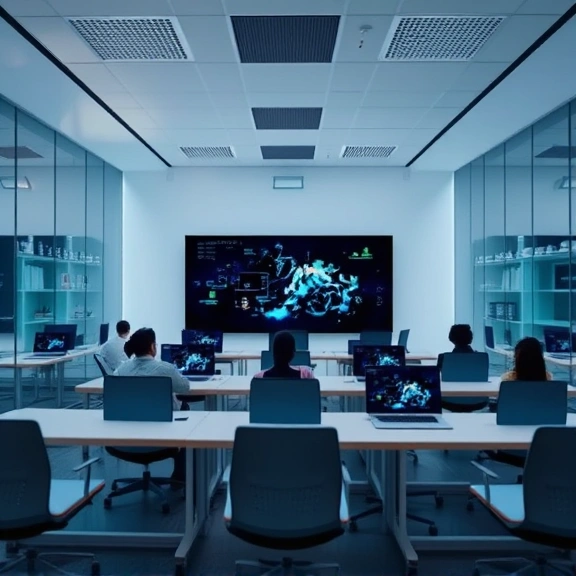
FAQs on Virtual Classrooms and Digital Learning
What are virtual classrooms?
Virtual classrooms are online spaces where education is delivered through digital platforms. They use video conferencing, chat, and interactive tools to facilitate real-time or asynchronous learning, allowing students to access lessons from anywhere. Virtual classrooms aim to replicate the experience of traditional classrooms through a digital medium.
How do virtual classrooms benefit students?
Virtual classrooms offer several benefits, including flexibility in scheduling, access to a broader range of courses, and the ability to learn at one’s own pace. They also reduce travel time and costs, making education more accessible. Additionally, they enable students to develop digital literacy skills essential for the modern workforce.
Are virtual classrooms effective for all subjects?
While virtual classrooms are effective for many subjects, especially theory-based ones, practical subjects may require adaptations. For instance, science courses might incorporate virtual labs, while art classes can use digital tools for creativity. Effectiveness largely depends on the design of the course and the use of interactive elements.
How do teachers manage virtual classrooms?
Teachers manage virtual classrooms by utilizing learning management systems (LMS) to organize course content, track student progress, and facilitate communication. They employ various digital tools to engage students and provide feedback. Training in digital skills is crucial for teachers to manage these platforms effectively.
What challenges do students face in virtual classrooms?
Students in virtual classrooms may face challenges such as technical issues, limited interaction with peers, and motivation difficulties. To overcome these, students can establish a regular study routine, utilize online forums for peer interaction, and seek support from instructors to maintain engagement.
How is a virtual classroom different from traditional learning?
Virtual classrooms differ from traditional learning in that they offer greater flexibility and accessibility, leveraging technology to deliver education. While traditional classrooms require physical presence, virtual classrooms use digital platforms for interaction. This shift enables personalized learning experiences but may lack the social aspects of in-person education.
Can virtual classrooms replace traditional education?
Virtual classrooms complement traditional education but may not completely replace it. They offer unique advantages, such as flexibility and scalability, but the lack of physical presence may affect certain aspects of learning, like hands-on practice and social interaction. A blended approach often provides the best of both worlds.
What role does technology play in virtual classrooms?
Technology is central to virtual classrooms, enabling the creation of interactive and engaging learning environments. Tools such as video conferencing, collaborative software, and AI-driven platforms facilitate communication, content delivery, and personalization. Continuous technological advancements will continue to shape the future of digital learning.
How can students stay motivated in a virtual classroom?
To stay motivated in a virtual classroom, students should set specific goals, create a dedicated study space, and establish a consistent routine. Engaging with peers and participating actively in discussions can also enhance motivation. Utilizing resources like online study groups and seeking regular feedback from instructors can further support commitment.
Conclusion: Embracing the Future of Digital Learning
As you navigate the evolving landscape of digital learning, it’s clear that virtual classrooms are more than a temporary solution; they represent a transformative shift in education. By embracing innovative teaching methods, you unlock a world of opportunities for personal and professional growth. Whether you’re a student seeking knowledge, an educator passionate about teaching, or an enthusiast eager to explore new frontiers, digital learning offers a path to a more accessible and engaging educational experience.
The journey into the future of digital learning is one of continuous discovery and adaptation. By leveraging technology, fostering collaboration, and maintaining a commitment to quality, we can overcome the challenges that accompany this transition. The potential for personalized learning, increased accessibility, and global connectivity is immense, promising a brighter and more inclusive educational future.
As you reflect on your own learning journey, consider how digital learning can enhance your experience. Are there courses you’ve always wanted to take but couldn’t due to logistical constraints? Are you ready to explore new subjects and skills at your own pace? The future of education is here, and it’s more personalized, flexible, and innovative than ever before.
Embrace this opportunity to redefine how you learn and teach. Share your experiences, engage with peers, and contribute to the ever-evolving narrative of digital learning. Together, we can shape a future where education transcends boundaries, empowering individuals to achieve their fullest potential.
Key Takeaways
- Virtual classrooms offer flexibility and accessibility, enabling learners to pursue education without geographical constraints.
- Technological advancements such as AI, VR, and AR are enhancing the learning experience, making education more interactive and personalized.
- Challenges in digital learning, like technology barriers and engagement issues, require innovative solutions and support systems.
- Educators must adapt to new pedagogical approaches and invest in professional development to succeed in digital learning environments.
- A blended learning approach that combines virtual and traditional methods often provides a balanced and effective educational experience.

